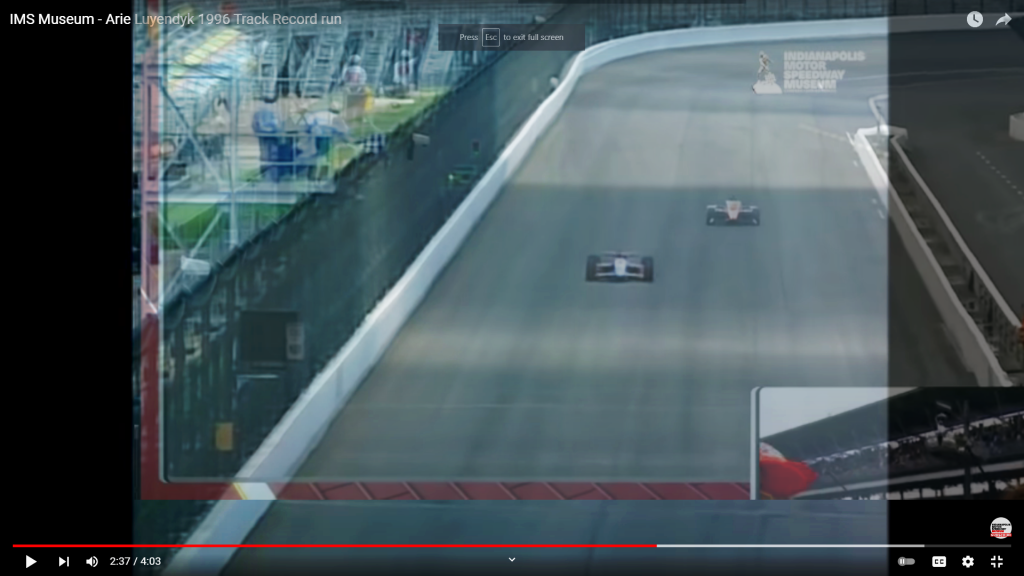
In 1997, I went from being optimistic that the speeds to challenge Luyendyk’s 1996 qualifying record would return in 8-10 years, to just hoping I’d be alive to see it. I was 30 years old then. Naïveté isn’t bounded by age, but rather experience apparently.
Flashback to 1997 and the all-new naturally-aspirated 4.0l v-8 engine and chassis formula of the IRL. The reduced engine costs and increased/deafening roar of the IRL indicated a new era where the perception was set that speed was no longer king. The 218 mph pole speed and 206 mph slowest qualifying speed in 1997 recalled speeds of a decade prior. Certainly a regression had happened which did nothing to assuage the concerns of the ticket-buying public, yours truly included.
Still, I had solid faith in the engineers and a very modest faith in the powers-that-be that solutions to ramping speeds back up would be forthcoming in a matter of years. By the time 10 years had passed though, we were hovering around the speeds of 16 years prior. Patience was wearing thin, even for this grizzled fan who had nearly seen it all by this point, but there was some progress on unification of open-wheel racing where better performance and a much better perception of the overall product was emphasized.
Flashforward another 15 years to yesterday, May 22, 2022.
A tumultuous set of weather parameters had rolled through the previous days, testing the limits of flexibility and skill of the teams and drivers during practice in preparation for qualifying. On Sunday however, a relative cool and calm settled over the speedway allowing the Fast 12 to really dial it in and let it go in their runs for the pole.
What resulted yesterday, in my view, was long-overdue, yet nothing short of magical to finally experience.
An ageless wonder, the kiwi-sensation, who even only at 41 years old, seems to have been around longer than nearly everyone at the speedway, save for Roger Penske, Tony Kanaan, and a few yellow-shirts. Scott “The Iceman” Dixon broke the speed record held by Scott Brayton from 1996 that had stood for over 26 years – a four-lap average of 234.046mph for the pole-winning speed. I felt as if the racing gods were again smiling down as they had 51 weeks prior when the fourth 4-time winner was crowned.

Of course the outright 4-lap qualifying record of 236.986mph (non-pole-winning speed held by Arie Luyendyk) still lay beyond us, but it truly seems so much closer than ever before. My appetite to see that record broken is truly whet. The potential for speed setbacks in the transition to new motors in 2024 looms, but I have to believe we’re not far away from 237.
I only hope to be there when it happens.


